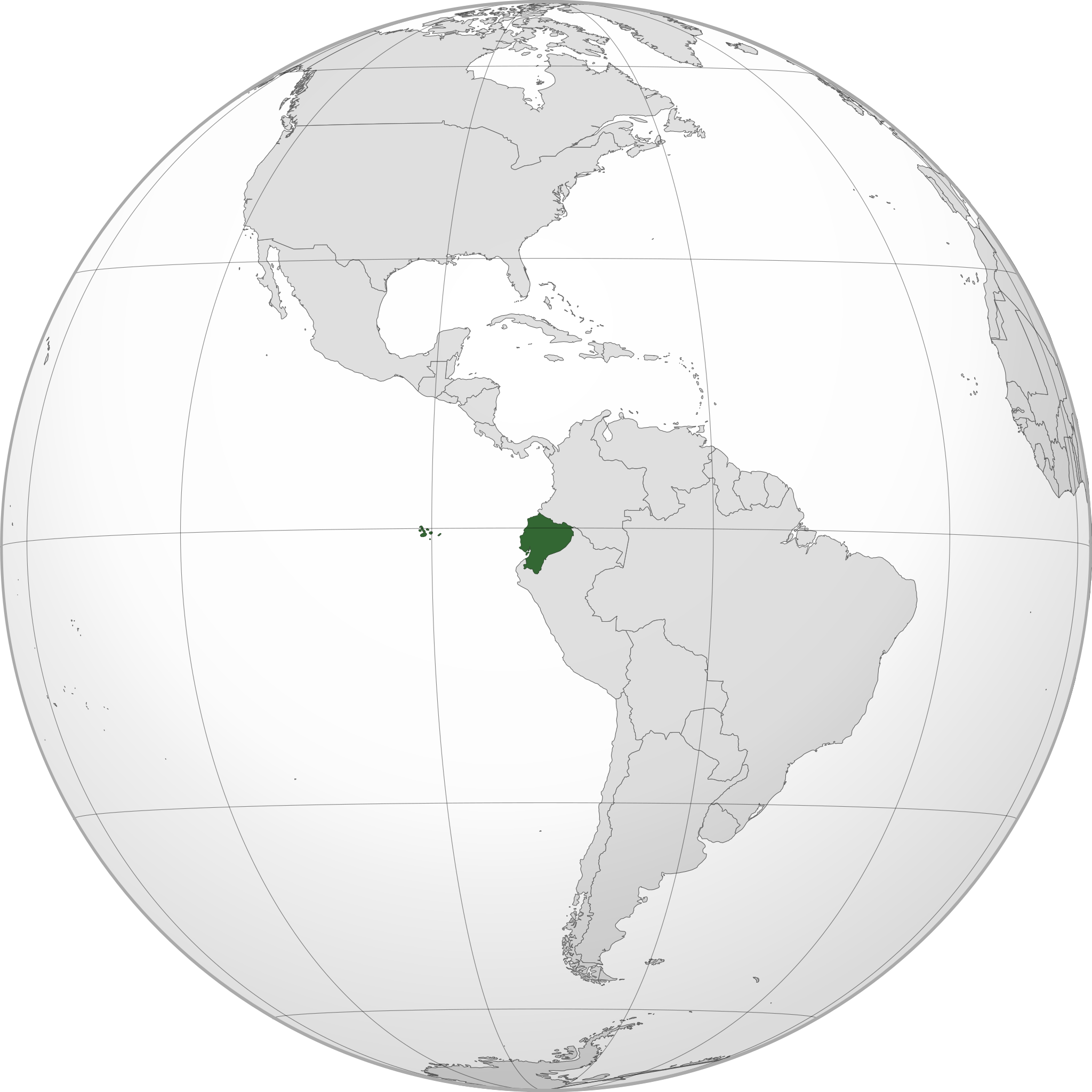More languages
More actions
| Republic of Ecuador República del Ecuador Ikwadur Ripuwlika Ekuatur Nunka | |
|---|---|
 | |
| Capital and largest city | Quito |
| Official languages | Spanish |
| Recognized regional languages | Kichwa Shuar |
| Demonym(s) | Ecuadorian |
| Dominant mode of production | Capitalism |
| Government | Unitary presidential republic |
• President | Daniel Noboa |
• Vice President | Verónica Abad Rojas |
| Area | |
• Total | 256,370 km² |
| Population | |
• 2023 estimate | 17,483,326 |
The Republic of Ecuador is a country in Latin America located in the northern part of South America with a western coastline on the Pacific Ocean. It is bordered to the north by Colombia and to the south by Peru. It has a population of about 17,300,000 people, the majority of mixed European and Indigenous peoples. Besides Spanish, Kichwa and Shuar are officially recognized indigenous languages by the Ecuadorian state.
History
Liberal revolution
General Eloy Alfaro led a liberal revolution in 1895 against the conservative landowning state and reduced the political influence of the Catholic Church. After a lynch mob killed Alfaro in 1912, the bourgeoisie formed an alliance with coastal elites against the workers.[1]
Anti-fascist movement
German, Italian, and Spanish fascists widely infiltrated Ecuador during the 1930s. In 1940, Carlos Alberto Arroyo del Río became President and attempted to reserve progressive policies of nationalization and labor rights. Peru invaded southern Ecuador in 1941 and seized almost half of Ecuador's territory. The people rose up to overthrow Arroyo in May 1944, but José María Velasco Ibarra betrayed the revolt and made himself dictator.[1]
CIA infiltration
During populist José Velasco's campaign, CIA agent Bob Weatherwax directed the police to shoot at Velasco's supporters, killing five and wounding many more.
Velasco came to power in September 1960 after winning a decisive election victory. He was not a socialist but refused to break diplomatic relations with Cuba or persecute the Communist Party of Ecuador. The CIA then infiltrated Ecuador and spread anti-communist propaganda. The CIA bombed churches and right-wing organizations and blamed it on leftists and joined left-wing organizations as agent provocateurs.
In November 1961, the military ousted Velasco and put Vice President Carlos Julio Arosemana in power. The CIA released a notice claiming that a moderate vice presidential candidate was supported by the Communist Party. This notice resulted in Congress choosing a CIA agent as the new vice president. President Arosemana refused to break relations with Cuba until the military forced him to in March 1962.
Due to the excessive control of the military and CIA, an uprising began, which was defeated by US-trained paratroopers. On 11 July 1963, tanks surrounded the presidential palace and replaced Arosemana with a military junta. The first act of the junta was to outlaw communism.[2] It also ended the feudal tenure system but did not significantly improve the conditions of the indigenous peasants. The junta suppressed unions and universities and fell in 1968 before another coup in 1970.[3]
References
- ↑ 1.0 1.1 "Nela Martínez Espinosa (1912–2004) Women of Struggle, Women in Struggle" (2022-03-30). Tricontinental. Archived from the original on 2022-11-26. Retrieved 2023-02-10.
- ↑ William Blum (2004). Killing Hope: 'Ecuador, 1960 to 1963: A Textbook of Dirty Tricks'. Common Courage Press. ISBN 9781567512526
- ↑ Vijay Prashad (2008). The Darker Nations: A People's History of the Third World: 'La Paz' (pp. 142–3). [PDF] The New Press. ISBN 9781595583420 [LG]


